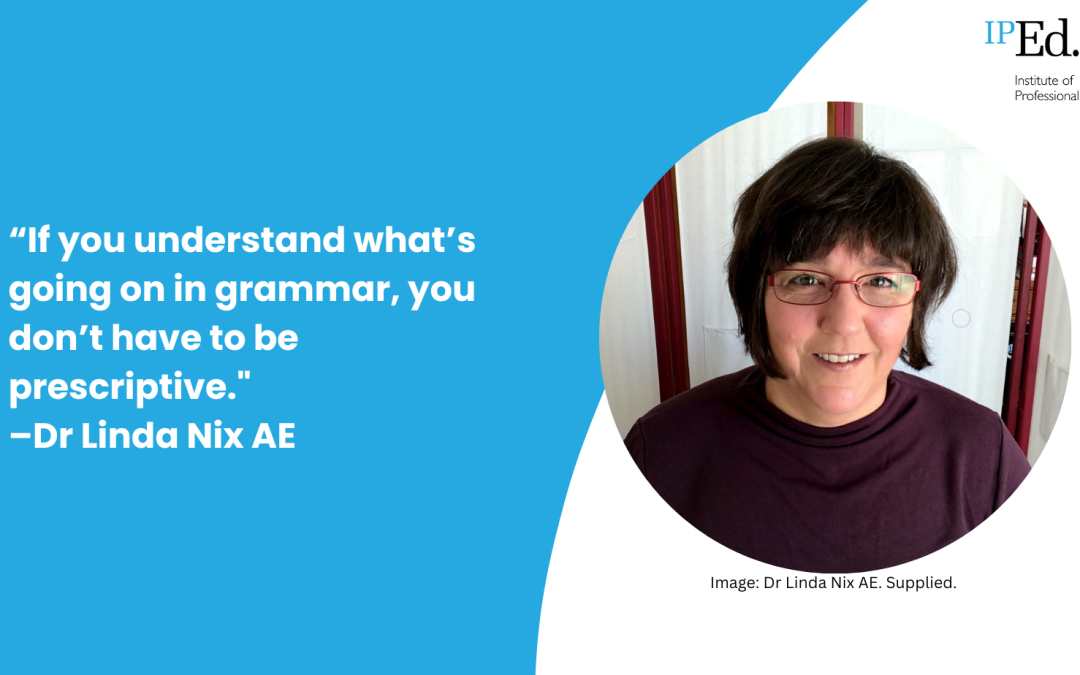by Elisabeth Thomas
On 4 July 2023 (postponed from 6 June), EdNSW hosted a popular and well-received presentation on grammatical gremlins. Dr Linda Nix AE is an experienced editor, designer and writer, runs her freelance business Golden Orb Creative, and is the past Chair of the IPEd Accreditation Board. Linda delivered an enlightening and entertaining talk explaining ways to ensure the meaning of text is clear.
“Sometimes we [both professional writers and editors] intuitively know that a sentence does not work but we can’t work out why exactly and sometimes we are so familiar with what the writer wants to convey that we don’t see what they’ve actually conveyed – and that’s where an understanding of grammar can help,” Linda said.
Linda focused most of her talk on syntax and started with the “bugbear” that is the split infinitive. Does the preposition “to” belong with the verb that precedes it or with the phrase containing the infinitive, and are matters complicated by an adverb? With examples in the use of “to”, Linda encouraged viewers to “let go of that idea” that “to” is part of the infinitive and not just a preposition. The practice of linking the preposition to the infinitive stemmed from translating Latin – in English it is a long-standing practice to happily separate the “to” from the infinitive with an adverb.
On editing a text to avoid a split infinitive, Linda pointed out that “there is nothing grammatically wrong with splitting a so-called infinitive if the meaning is clear and it means what it says”.
Some “rules” Linda then offered included “don’t mess with something that works; keep prepositions with their phrases [and] be careful about positioning adverbs”.
Examples of adverb placement in sentences followed, illustrating the perils of incorrect placement, and altered or unwanted meaning. “Misplaced modifiers [e.g. adverbs or phrases] are probably the most common source of textual ambiguity,” Linda said. “While readers can probably work out [meaning] from context, good writing doesn’t make the reader do this extra work. It is instantly understandable.”
Linda went on to pose (and answer) questions that took syntax errors beyond misplaced into the realms of dangling modifiers or participles – and the ambiguity and humour that can ensue.
The next topic was an examination of parallel construction or parallel structure. Usually associated with lists, it can also be used syntactically within a sentence to aid meaning.
Examples of common editing problems, which prompted some discussion, demonstrated the dilemma of subject–verb agreement and collective nouns. Here, Linda included the often-overlooked complication of pronoun ambiguity.
Linda concluded her presentation with a look at just a couple of points of punctuation that “may do more harm than good”, if poorly applied, to meaning in a text.
Most grammatical errors tend to be subtle. “At best readers will have to read an unclear sentence only two times to work it out; at worst they will not grasp the intended meaning at all … Depending on the kind of text, the result may be inconsequential [to] the reader or there may be disastrous real-world consequences in the case of the law or safety manuals. Good writing is clear and unambiguous,” Linda said.
A closing key point from Linda during the Q&A:
“If you understand what’s going on in grammar, you don’t have to be prescriptive. It’s all about conveying the [intended] meaning.”
Access to the recording of the presentation will be available to purchase via the IPEd events page (or free if you paid to attend).

